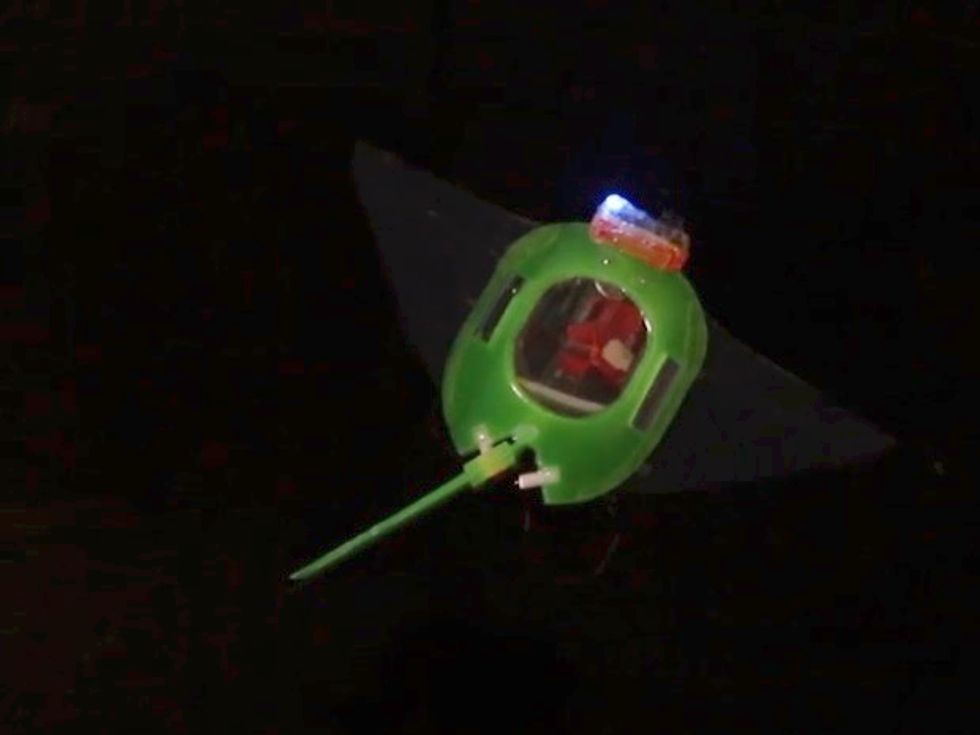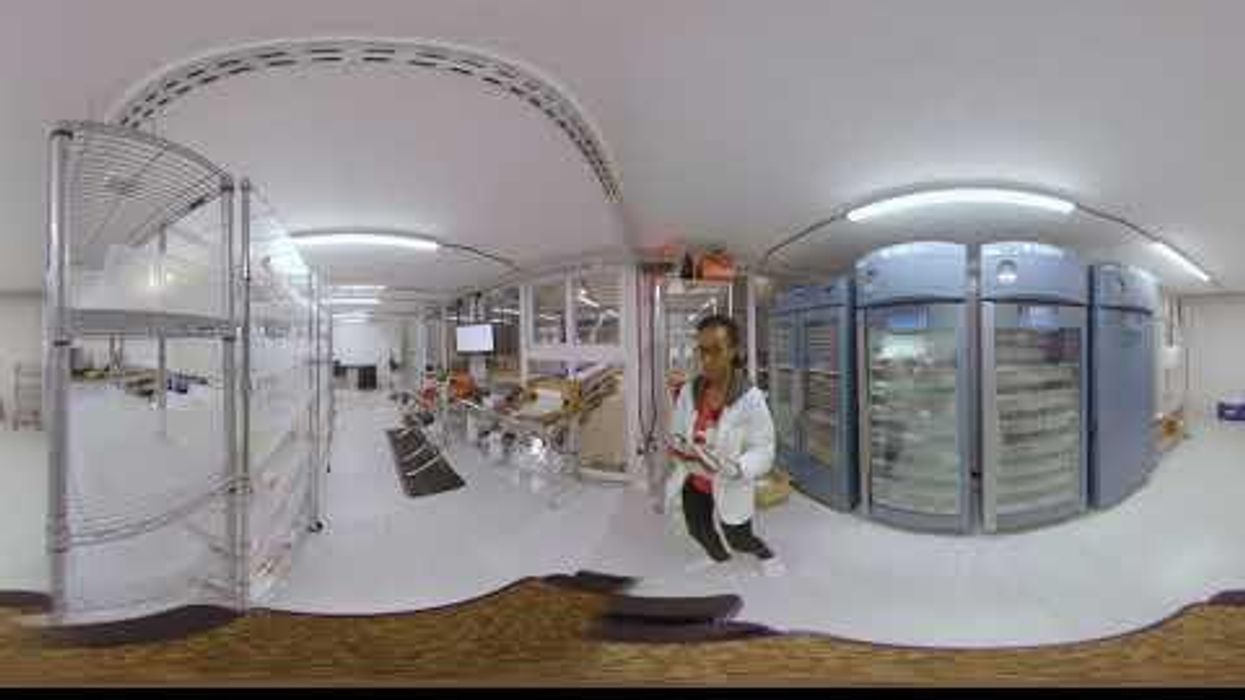This robotic ray, developed at Zhejiang University in Hangzhou, China, is propelled by soft flapping wings made of dielectric elastomers, which bend when electricity is applied to them. Dielectric elastomers respond very quickly with relatively large motions, but they require very high voltages (on the order of 10 kilovolts) to get them to work. Traditionally, dielectric elastomers are covered in insulation, but for this aquatic application the researchers instead just submerged everything insulation free, relying on the water to act as both electrode and electric ground.
There are several other reasons why this design is notable. First, it’s almost entirely transparent, with the body, fins, tail, and elastomer muscles being completely see-through. The effect is slightly spoiled when you add the electronics and batteries required for untethered operation, but the fact that it can be self-contained at all is notable as well: A 450-mAh, 3.7-V battery will keep it swimming along at 1.1 centimeters per second for a solid 3 hours and 15 minutes, and it can even carry a tiny camera. Maximum untethered speed is 6.4 cm/s, and the robot fish will happily swim around in water temperatures ranging from slightly above freezing to nearly 75° C.
The overall efficiency of this robot is comparable to a rainbow trout, in the sense that a 25-cm long trout expends about 0.03 watt to move at 10 cm/s. A real trout can move much faster and more dynamically, of course, but for robots, hitting that biological level of efficiency is much more significant. The researchers aren’t yet ready to suggest any specific applications for the robot, so it’s probably better to simply look at it as proof that these technologies work, leaving a practical robot for the next generation.



